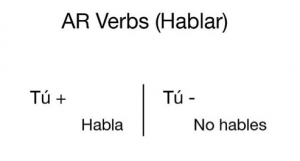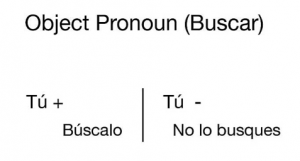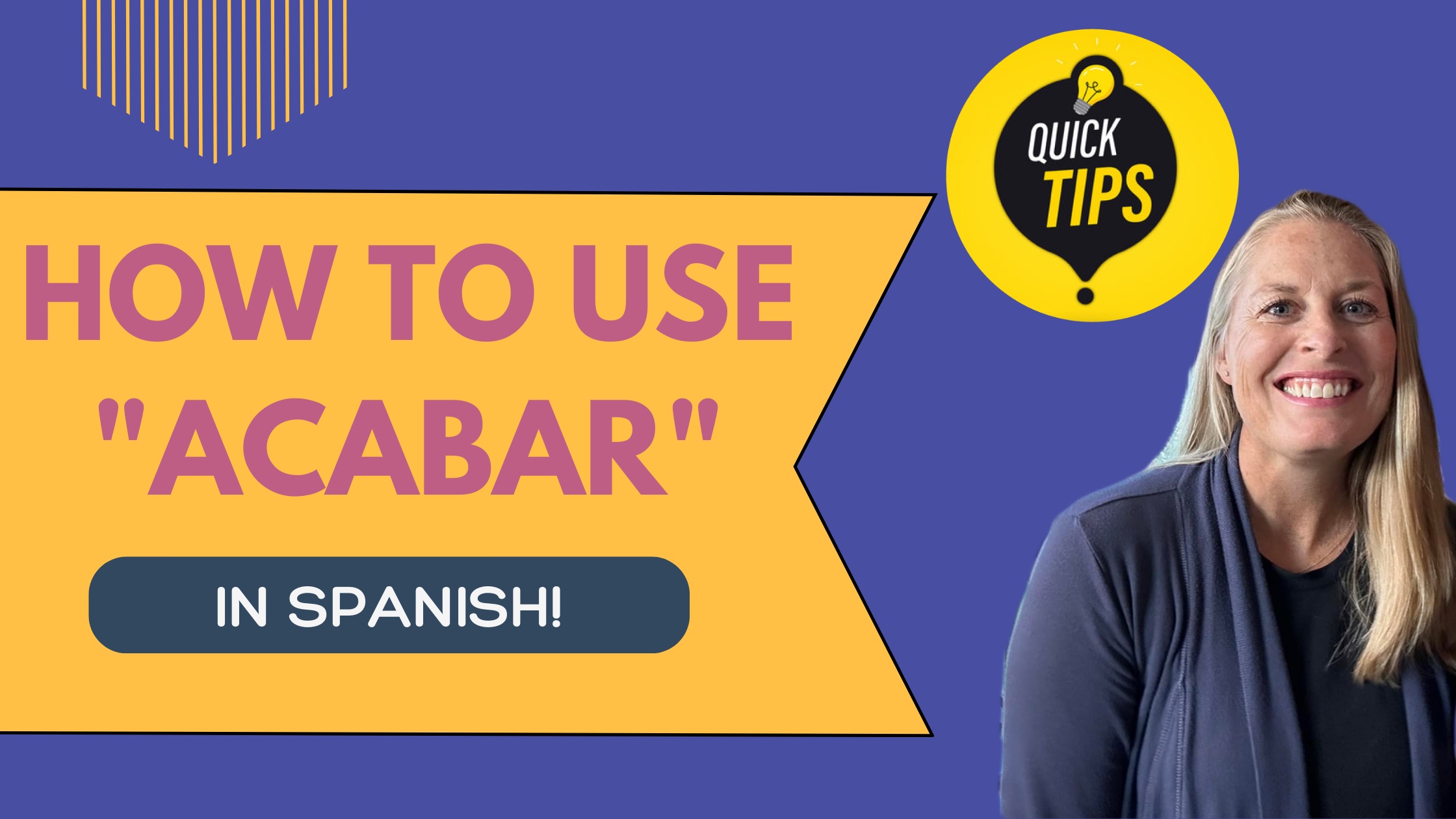Tell me how to give commands in Spanish! Raise your hand! Don’t eat that! We give commands and instructions everyday…so how do I give commands in Spanish? Read these instructions carefully!
Whether you are a teacher instructing students, a doctor instructing a patient, or a big brother bossing your little sister, it is important that you know the correct way to give commands in Spanish.
The Imperative is the command form of verbs. You use this tense when you want to give a quick instruction. In the tú form, the conjugation of this tense is significantly different in the affirmative and negative forms.
How to form commands in Spanish:
The formation of this tense depends on whether your command is affirmative or negative.
- To conjugate the affirmative tú command use the él/ella/usted form of the present tense. For example:
- hablar is conjugated habla
- comer is conjugated come
- To conjugate the negative tú command you first must use no and then the tú form of the present subjunctive. For example:
- hablar is conjugated no hables
- comer is conjugated no comas


With every grammar rule, there are of course exceptions. The irregular command verbs are venir, decir, salir, hacer, tener, ir, poner, and ser.
| Affirmative | Negative | |
| Venir | Ven | No vengas |
| Decir | Di | No digas |
| Salir | Sal | No salgas |
| Hacer | Haz | No hagas |
| Tener | Ten | No tengas |
| Ir | Ve | No vayas |
| Poner | Pon | No pongas |
| Ser | Sé | No seas |
To help you remember these irregular verbs, we found a fun mnemonic phrase of the irregular affirmative informal tú Spanish commands. It is: VIN DIESEL HAS TEN WEAPONS
Each syllable (plus the final –s) in the phrase stands for one of the eight irregular commands:

Admittedly, merging the English phrase with the Spanish words that it approximates requires a slight stretch in pronunciation, but our students seem to like it, and it does indeed seem to help them remember what would otherwise be a difficult set of irregular verb forms. Hope this helps you as well!
How to use commands in Spanish with pronouns:
Often, there is an object pronoun or reflexive pronoun attached to a command.
- When the affirmative command requires a pronoun of any kind (reflexive, indirect object, or direct object), the pronoun gets attached to the end of the verb. For example:
- “Sit down” would be siéntate
- “Talk to me” would be háblame
- When the negative command requires a pronoun of any kind (reflexive, indirect object, or direct object), the pronoun always goes before the verb. For example:
- “Don’t sit down” would be no te sientes
- “Don’t talk to me” would be no me hables
- The addition of a pronoun at the end of an imperative requires a written accent mark over the stressed syllable of the verb if the syllable is followed by two or more syllables.


If you are a Healthcare professional, check out the blog Formal Medical Spanish Commands for a list of helpful commands to use with your patients.
And if you found this explanation and mnemonic devise helpful, you should check out the High School Spanish App! It contains similar explanations, mnemonic devises, and practice activities for every Spanish grammar concept.






